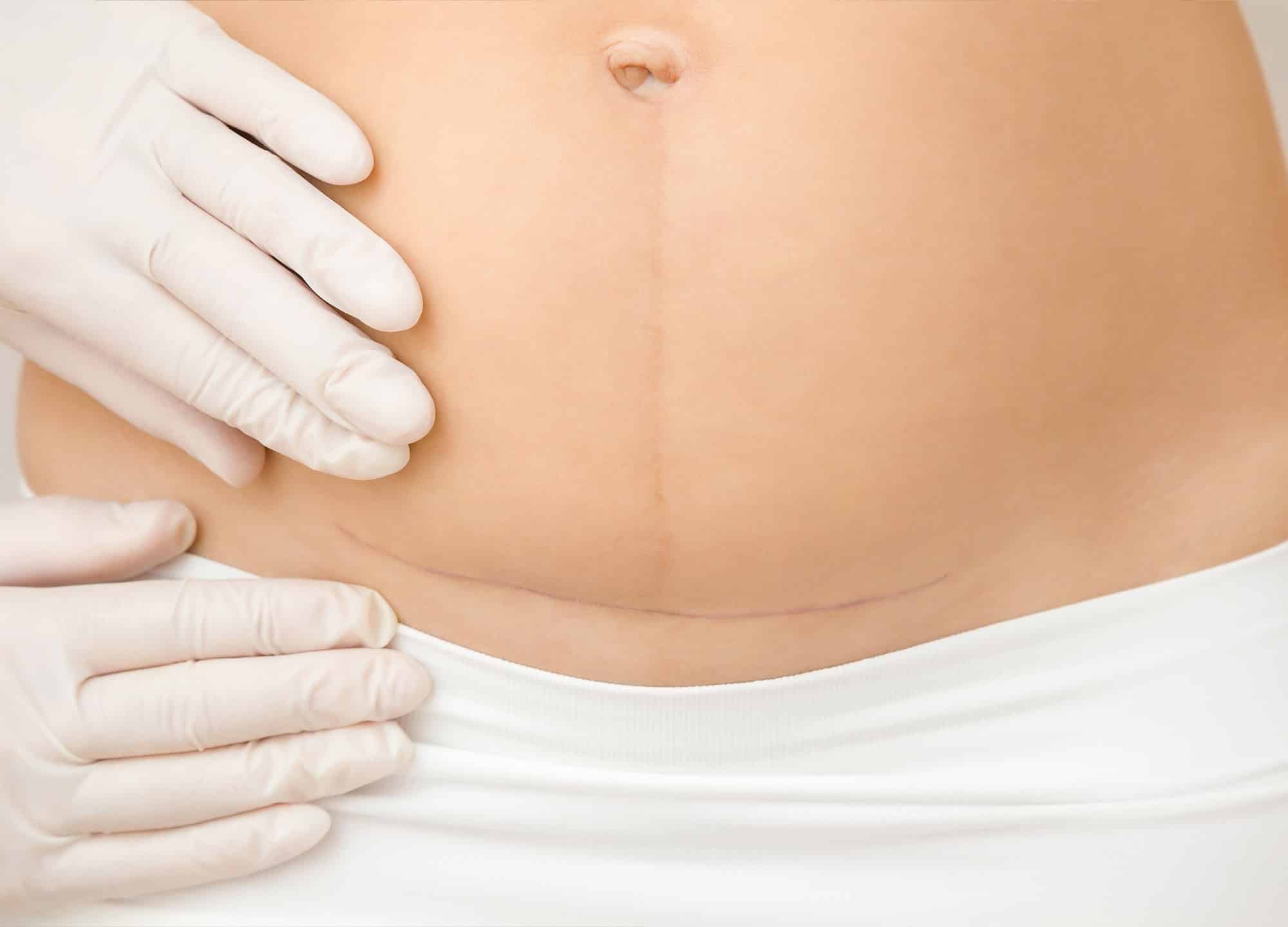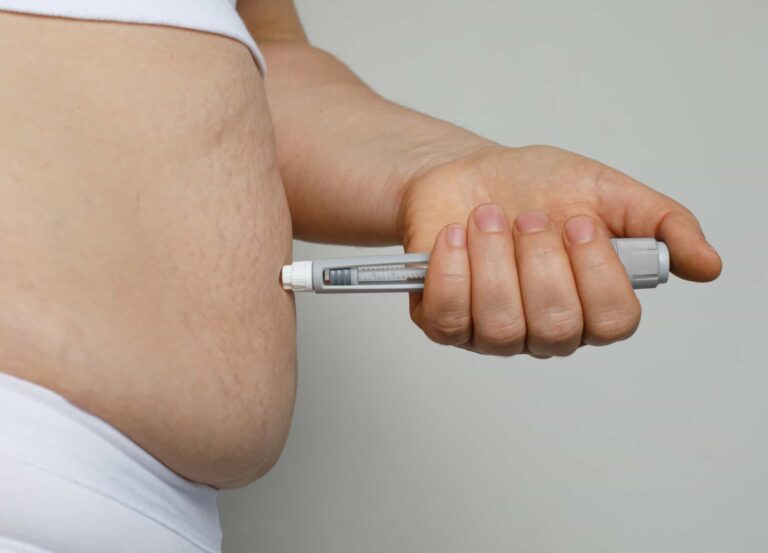Picture this: After months or years spent planning and budgeting for a tummy tuck, you’ve finally gone under the knife and are convalescing at home. A week into recovery, you decide to examine your new body and see something strange—a protuberance that looks and feels like a water balloon sticking out of your torso.
Though this scenario would be alarming to anyone, it really isn’t cause for concern. Though uncommon, lumps and bumps known as seromas can appear as you heal. They often go away during the recovery process, but don’t think that means you should just ignore them. To ensure you’re ready for anything and everything ahead of your next procedure, we got insight into seromas from two plastic surgeons. Here, we break down exactly what they are, how to get rid of them, and the very rare cases when they might just be a sign of something serious.
What is a seroma?
If you’ve ever had a blister after wearing an uncomfortable pair of shoes, you’ve seen how the raw, tender skin at the surface pulls away from lower layers, causing a bubble of fluid inside. A seroma is similar, except that it forms under the skin. When tissue is removed during surgical procedures, it inherently causes trauma to the body, triggering the healing response. Swelling is a natural reaction to trauma, but it doesn’t always resolve on its own and can result in a seroma.
“A seroma is a fluid collection under the skin that can happen after surgery if the body does not absorb the swelling,” explains Dr. David Shafer, a board-certified plastic surgeon in New York City. “A seroma may appear as a swelling beneath the skin and is typically composed of a clear, yellowish fluid that is filtered from the blood,” says Dr. Shirley Madhère, a holistic plastic surgeon in New York City. (In fact, it’s the same fluid—serous fluid, to be specific—that you see in blisters.) To know if your lump is a seroma, try Dr. Shafer’s “wave test” by gently pressing on a portion of the area. “If there is a seroma or fluid collection, you’ll see a wave effect on the surrounding skin,” he says.
The cause of seroma formation is simple—newly created space beneath the skin. During a tummy tuck, for example, your surgeon will lift up the skin on your abdomen and tighten the underlying muscles before stitching you back up. When your doctor is resecuring the skin to your muscle, a space can form between the two where fluid can collect. “[This] is why surgeons often place a drain after surgery, to remove any fluid and let the layers stick back together,” notes Dr. Shafer.
Some of the most common forms of plastic surgery typically associated with seromas include the aforementioned tummy tuck, mastectomy, breast augmentation, thigh lift, and Brazilian butt lift. But seroma formation is fairly uncommon, even in patients who don’t have a drain installed after surgery. “There is a scientific hypothesis that a multitude of factors may contribute to the development of a seroma after surgery,” says Dr. Madhère.
According to a study published in the Journal of Breast Cancer in 2012, surgical technique and how much tissue is affected can play a role. But how you prepare for surgery can also reduce your risk of seroma formation. In general, healthier patients are less prone to side effects, and that includes seroma. Maintaining a healthy weight, normal blood pressure, and a smoke-free lifestyle can go a long way toward a smooth recovery.
Is a seroma dangerous?
In most cases, seromas aren’t dangerous. And while you’d assume seromas are painful, they usually aren’t—they’re just annoying or uncomfortable, if anything. They even often resolve on their own (more on this shortly). That’s not to say they should be ignored, however. Dr. Madhère points out that larger fluid collections that are painful definitely require additional treatment, as they can become infected or interfere with proper healing.
The seromas that form when recovering from a procedure are quite often harmless, but if you have augmented breasts and are observing swelling in one breast, it’s time to see your doctor. “Any new or late-term seroma around a breast implant should be evaluated by your surgeon,” warns Dr. Shafer. “BIA-ALCL [breast implant–associated anaplastic large-cell lymphoma] can cause fluid accumulation around the breast implant.” In these cases, the serous fluid inside the seroma will contain cancerous cells. This form of seroma can occur quite suddenly years after surgery and is an early sign of BIA-ALCL; when BIA-ALCL is caught early, it’s easy to treat and rarely requires chemotherapy, so don’t hesitate to visit your surgeon.
Do seromas go away on their own?
A lot of plastic surgery post-op protocol has seroma prevention built in—temporary drains and compression garments are fairly standard and can help reduce the likelihood of their formation. Still, even when they do appear, they tend to go away on their own. “A seroma may resolve over time as the body slowly and steadily absorbs the excess fluid collected at the surgical site,” says Dr. Madhère. “This may take weeks to months.”
That said, let your surgeon make this determination for you; we don’t recommend waiting weeks to have your seroma evaluated. If a seroma is left untreated for too long, your body could form a fibrous capsule around it, which is harder to correct. Your doctor will be best able to determine whether it should be treated or left alone; just point out your seroma at your follow-up appointment and see what they say. “If the seroma is larger or not going away, then a small procedure can be performed in the office—you are given a small numbing shot, and then the fluid is drained with a syringe,” says Dr. Shafer.
Can you get rid of a seroma at home?
If your provider determines that your seroma doesn’t need surgical intervention and can resolve itself, there are a few things you can do at home to help speed the process along. In addition to wearing your compression garments, another common method is manual lymphatic drainage, or MLD. “MLD is a specific kind of massage where the therapist uses light pressure combined with mild or soft pumping actions to help increase the efficiency of the lymphatic system, the circulatory system of the body that helps to eliminate excess fluid,” explains Dr. Madhère. “After surgery, the massage technique may not only reduce fluid buildup but also discomfort, swelling, and abnormal scar formation.”
If you can find a professional who is certified in this methodology, we encourage you to get treated by them, as MLD is technique sensitive—but if you end up going the DIY route, know that a light touch is key. “It’s important that there not be too much compression,” notes Dr. Shafer. If your massage is too firm or if you wear garments that are too tight, this can restrict the flow of lymph through your body and prevent resorption of the serous fluid.











